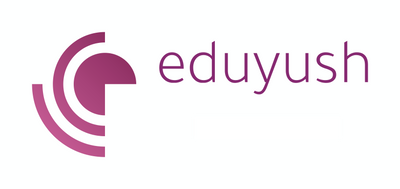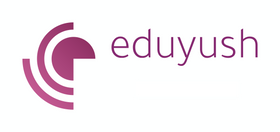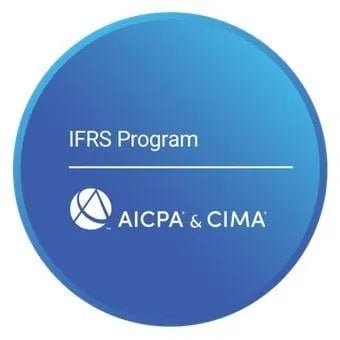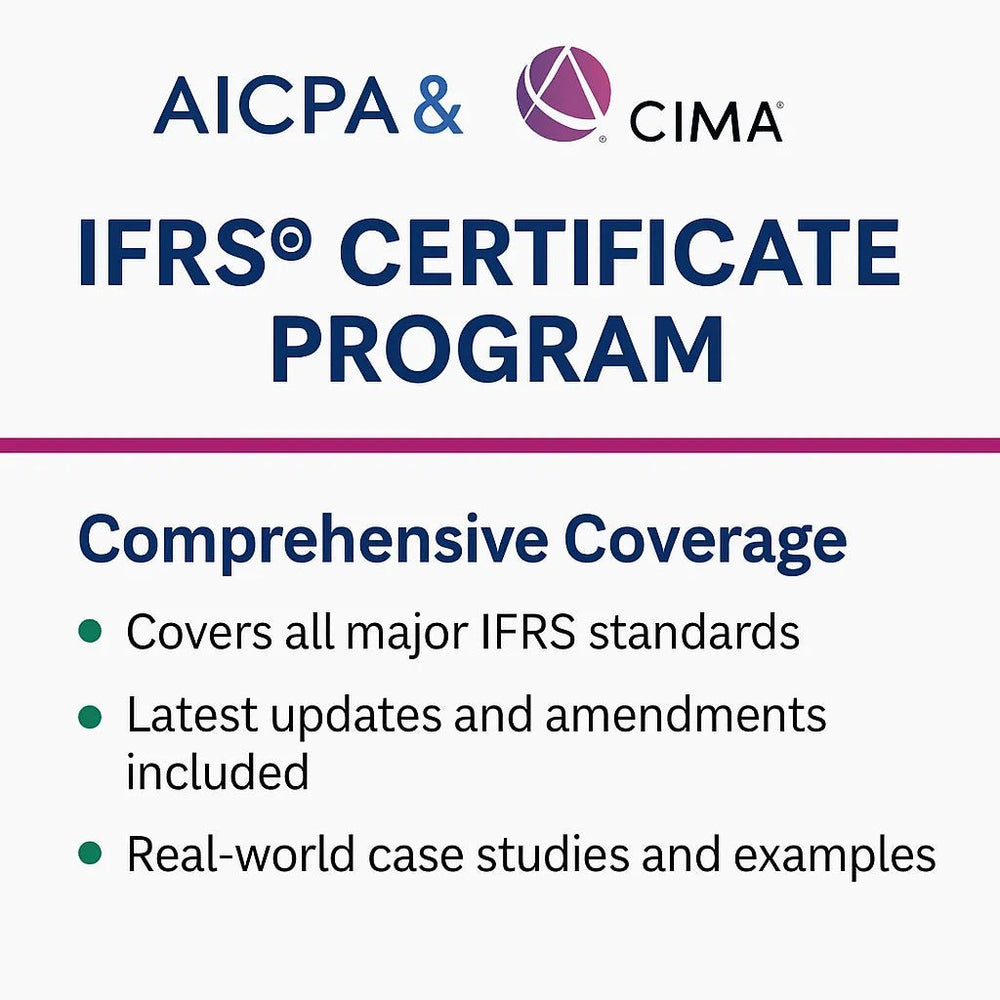Cyber Insurance Silverfort 2025 MFA Requirements
Cyber Insurance Coverage Silverfort 2025: Complete MFA Requirements, Costs & Compliance Guide
15-minute read
Cyber Insurance Coverage for Silverfort has become a business-critical requirement in 2025, with 51% of businesses now needing MFA just to qualify for coverage. As global cybercrime costs are projected to reach $10.5 trillion annually by 2025, combining Silverfort's advanced identity protection with comprehensive cyber insurance isn't just recommended—it's essential for survival.
This comprehensive guide provides an overview of cyber insurance with Silverfort in 2025, covering new MFA requirements, cost considerations, implementation strategies, and how to qualify for better premiums.
What is Cyber Insurance and Why is it Required in 2025? {#what-is-cyber-insurance}
Cyber insurance is a specialized policy that protects businesses from financial losses caused by cyber incidents, including data breaches, ransomware attacks, and system failures. In 2025, cyber insurance will have evolved from a nice-to-have to an absolute necessity.
Why Cyber Insurance is Critical in 2025
The numbers tell the story:
- 47% of companies with less than $10M in annual revenue were attacked in 2024
- Small businesses paid an average of $330,000 for ransoms in 2024
- Only 17% of SMBs have cyber insurance, while 80% of large enterprises do
- The average cost of a data breach can reach $9.48 million for larger organizations
For businesses using Silverfort's cybersecurity platform, cyber insurance provides crucial financial protection alongside advanced security defenses. However, obtaining coverage now requires meeting strict security requirements that traditional MFA solutions often cannot fulfill.
How Much Does Cyber Insurance Cost in 2025?
Cyber insurance premiums increased by 50% in 2023, though prices have begun stabilizing in 2025. The cost varies significantly based on your security posture:
- Businesses with comprehensive MFA (like Silverfort): Lower premiums, better terms
- Organizations lacking proper security controls: Significantly higher costs or coverage denial
- Small businesses: Average annual premiums range from $1,000-$7,500
- Enterprise organizations: Can pay $15,000-$100,000+ annually
Importantly, businesses with strong security frameworks like Silverfort often qualify for 15-25% premium discounts as insurers view them as lower-risk candidates.
2025 Cyber Insurance Market Trends {#market-trends-2025}
Market Growth and Statistics
The cyber insurance landscape has transformed dramatically:
- Global market size: Expected to reach $16.3 billion in 2025
- North America dominance: Holds 70% of global premiums
- Europe: 19% market share, driven by GDPR compliance
- APAC adoption: Still low at 8% but rapidly growing
Key Industry Changes
Stricter Requirements: Insurance providers have moved beyond questionnaires to actual technical validation of security controls, sometimes including external scans and penetration tests.
AI Impact: 50% of businesses now leverage AI-driven security solutions for better premiums, while insurers use AI for more sophisticated risk assessment.
MFA Mandate: 51% of businesses must have MFA to qualify for coverage, making comprehensive solutions like Silverfort essential.
What Percentage of Businesses Have Cyber Insurance?
The adoption gap remains significant:
- Large enterprises: 80% coverage rate
- SMBs: Only 10% have coverage
- Healthcare and finance: Highest adoption due to regulatory requirements
- Manufacturing and retail: Growing adoption driven by supply chain risks
This represents a massive opportunity for businesses to gain a competitive advantage through proper cyber insurance coverage.
Understanding Silverfort's Cybersecurity Platform {#silverfort-platform}
Silverfort is an advanced cybersecurity solution that provides unified identity protection across all systems, both on-premises and in the cloud. What sets Silverfort apart is its agentless architecture that extends MFA to resources traditional solutions cannot protect.
Core Capabilities
Universal MFA Coverage: Silverfort extends MFA protection to:
- Legacy systems and applications
- Command-line tools (PowerShell, PsExec)
- IT infrastructure and admin interfaces
- Service accounts and machine-to-machine access
- Homegrown applications
AI-Powered Risk Assessment: Silverfort's adaptive risk engine analyzes each access request in real-time, applying dynamic authentication based on:
- User identity and behavior patterns
- Access context and device characteristics
- Resource sensitivity and risk level
- Threat intelligence indicators
Seamless Integration: Unlike traditional MFA solutions requiring extensive integration, Silverfort's agentless approach enables rapid deployment without:
- Installing agents on individual systems
- Modifying existing infrastructure
- Disrupting operational workflows
Why Traditional MFA Falls Short for Cyber Insurance
Most cyber insurance policies now require "MFA everywhere," but traditional solutions have critical limitations:
- Legacy system gaps: Cannot protect older applications and infrastructure
- Command-line vulnerabilities: Miss PowerShell, SSH, and other administrative tools
- Complex deployment: Requires extensive integration and maintenance
- Incomplete coverage: Leave attack vectors open that cybercriminals exploit
Silverfort solves these challenges by providing 100% MFA coverage across your entire environment, ensuring complete compliance with cyber insurance requirements.
New MFA Requirements for Cyber Insurance in 2025 {#mfa-requirements}
What are the New MFA Requirements for Cyber Insurance in 2025?
Cyber insurance providers have significantly tightened MFA requirements:
Mandatory Coverage Areas:
- All administrative accounts and privileged access
- Email systems and remote access
- Network infrastructure and security tools
- Cloud services and applications
- Service accounts and automated systems
Advanced Requirements:
- Conditional MFA: Risk-based authentication that adapts to threat levels
- Phishing-resistant methods: FIDO2, PKI-based authentication, and hardware tokens
- Real-time monitoring: Continuous authentication assessment and anomaly detection
- Complete audit trails: Comprehensive logging for compliance verification
Can I Get Cyber Insurance Without MFA?
Short answer: No. Most cyber insurance providers now mandate MFA for policy eligibility. Applications are frequently rejected if businesses lack comprehensive MFA coverage, especially for:
- Administrator and privileged accounts
- Email and collaboration systems
- Remote access and VPN connections
- Critical business applications
Why insurers require MFA:
- MFA can block over 99.9% of account compromise attempts
- Credential theft is the leading cause of data breaches globally
- 80% of breaches involve compromised credentials
- MFA significantly reduces claim likelihood and severity
Does Silverfort MFA Meet All Cyber Insurance Requirements?
Yes, comprehensively. Silverfort's agentless MFA solution meets and exceeds cyber insurance requirements by:
Complete Coverage: Protecting 100% of assets, including legacy systems that traditional MFA cannot reach
Advanced Authentication: Supporting conditional MFA, risk-based authentication, and phishing-resistant methods
Seamless Integration: Working with existing MFA solutions to fill coverage gaps rather than requiring replacement
Compliance Reporting: Providing detailed audit trails and compliance documentation for insurance applications
What Happens if My MFA Doesn't Cover Legacy Systems?
Legacy system gaps are a primary reason for insurance application rejection. Traditional MFA solutions cannot protect:
- Older applications without modern authentication support
- Command-line administrative tools
- Industrial control systems and IoT devices
- Homegrown applications and databases
Silverfort's solution: Extends MFA to all legacy resources through its agentless architecture, ensuring no security gaps that could prevent policy qualification or lead to claim denials.
Implementation Guide for Cyber Insurance Compliance {#implementation-guide}
How Long Does it Take to Implement Silverfort for Cyber Insurance Compliance?
Silverfort's agentless architecture enables rapid deployment in 2-4 weeks, significantly faster than traditional MFA solutions that can take months.
Phase-by-Phase Implementation
Phase 1: Assessment and Planning (Week 1)
- Free Silverfort Assessment: Identify current MFA coverage gaps
- Risk Analysis: Document vulnerabilities and compliance requirements
- Implementation Planning: Design deployment strategy and timeline
- Stakeholder Alignment: Coordinate with IT, security, and insurance teams
Phase 2: Core Deployment (Week 2)
- Platform Installation: Deploy Silverfort's agentless platform
- Identity Integration: Connect with Active Directory and identity providers
- Policy Configuration: Set up risk-based authentication rules
- Initial Testing: Validate functionality with pilot user groups
Phase 3: Coverage Extension (Week 3)
- Legacy System Protection: Extend MFA to previously unprotected resources
- Service Account Security: Implement adaptive authentication for automated accounts
- Administrative Access: Secure all privileged and administrative interfaces
- Network Infrastructure: Protect switches, routers, and security appliances
Phase 4: Validation and Documentation (Week 4)
- Comprehensive Testing: Verify 100% MFA coverage across all systems
- Compliance Reporting: Generate documentation for insurance applications
- User Training: Educate staff on new authentication procedures
- Insurance Submission: Submit applications with compliance evidence
Can Silverfort Work with My Existing MFA Solution?
Absolutely. Silverfort is designed to complement, not replace , existing MFA infrastructure:
Integration Benefits:
- Gap Filling: Extends protection to resources your current MFA cannot cover
- Unified Management: Centralizes authentication policies across all systems
- Cost Optimization: Maximizes existing MFA investments while achieving complete coverage
- Gradual Migration: Allows phased transition if MFA consolidation is desired
Common Integration Scenarios:
- Microsoft Azure MFA: Silverfort extends coverage to on-premises and legacy systems
- Okta/Auth0: Protects resources outside cloud SSO scope
- RSA SecurID: Adds agentless protection for infrastructure and command-line access
- Duo Security: Fills gaps in legacy application and service account coverage
What is Silverfort's Cyber Insurance Assessment?
Silverfort provides a free, comprehensive assessment that identifies security gaps preventing alignment with cyber insurance requirements. The assessment includes:
Admin User Visibility
- Complete inventory of all administrative accounts, including shadow admins
- Privilege mapping showing access levels and permissions
- MFA coverage analysis identifying unprotected admin access
- Risk scoring based on account activity and permissions
Service Account Discovery
- Comprehensive catalog of all service accounts across the environment
- Privilege level assessment showing potential lateral movement risks
- Activity monitoring detects anomalous behavior patterns
- Risk evaluation identifies compromised or vulnerable accounts
Identity Security Hygiene
- Password policy analysis identifying weak or stale credentials
- Protocol vulnerabilities detecting NTLM, NTLMv1, and other weak protocols
- Kerberoasting risks identifying admin users with SPNs
- Configuration gaps highlight security misconfigurations
Active Threat Detection
- Live threat identification spotting ongoing identity-based attacks
- Lateral movement detection identifies Pass-the-Hash and Pass-the-Ticket attacks
- Credential harvesting , detecting Kerberoasting, and password spraying
- Brute force monitoring identifies unauthorized access attempts
How Does Silverfort's Assessment Help with Cyber Insurance Applications?
The assessment provides concrete evidence of the security posture that insurance underwriters require:
Documentation Benefits:
- Gap identification: Clear mapping of MFA coverage deficiencies
- Remediation roadmap: Specific steps to achieve compliance
- Progress tracking: Measurable improvements over time
- Compliance proof: Evidence for insurance applications and audits
Underwriter Value:
- Risk quantification: Precise measurement of identity-related risks
- Control validation: Proof of implemented security measures
- Continuous monitoring: Ongoing security posture assessment
- Incident prevention: Demonstrated threat detection and response capabilities
Cost Analysis and ROI {#cost-analysis}
How Much Can Silverfort Reduce Cyber Insurance Premiums?
Organizations implementing comprehensive identity protection like Silverfort typically see:
Premium Reductions:
- 15-25% immediate savings through improved risk profile
- Additional discounts for maintaining a strong security posture
- Better policy terms , including higher coverage limits and lower deductibles
- Faster approval processes due to clear compliance demonstration
Risk Mitigation Value:
- 99.9% reduction in credential-based attacks
- Significant decrease in breach likelihood and impact
- Lower incident response costs through proactive threat detection
- Reduced business interruption from security incidents
What is the ROI of Implementing Silverfort for Cyber Insurance?
Financial Benefits:
Direct Savings:
- Insurance premium reductions: $5,000-$50,000+ annually
- Avoided breach costs: $330,000-$9.48M+ per incident
- Reduced compliance costs: $10,000-$100,000+ annually
- Operational efficiency gains: 20-40% reduction in identity management overhead
Risk Reduction:
- 99.9% decrease in successful credential attacks
- 50-80% reduction in identity-related security incidents
- Significantly lower regulatory fine exposure
- Improved business continuity and reputation protection
Typical ROI Scenarios:
Small Business (50-200 employees):
- Silverfort investment: $15,000-$30,000 annually
- Insurance savings: $2,000-$10,000 annually
- Breach avoidance value: $330,000+ per incident
- ROI: 300-1000%+ including risk mitigation
Mid-Market (200-1000 employees):
- Silverfort investment: $30,000-$75,000 annually
- Insurance savings: $10,000-$25,000 annually
- Breach avoidance value: $1M-$5M+ per incident
- ROI: 200-500%+ including risk mitigation
Enterprise (1000+ employees):
- Silverfort investment: $75,000-$200,000 annually
- Insurance savings: $25,000-$100,000+ annually
- Breach avoidance value: $5M-$50M+ per incident
- ROI: 150-300%+ including risk mitigation
Is Cyber Insurance Worth it for Small Businesses?
Critical. The statistics are compelling:
Threat Reality:
- 47% of small businesses were attacked in 2024
- Average ransom payment: $330,000
- 59% of SMB owners incorrectly think they're "too small" to be targeted
- Only 17% of SMBs have cyber insurance coverage
Protection Value:
- Coverage for legal fees, data restoration, and regulatory fines
- Access to incident response teams and cybersecurity experts
- Business interruption protection minimizes operational disruption
- Reputation management support following security incidents
Silverfort Advantage for SMBs:
- Simplified deployment without dedicated security teams
- Comprehensive protection rivaling enterprise-level security
- Cost-effective solution that qualifies for insurance discounts
- Automated management reduces the ongoing operational burden
Industry-Specific Solutions {#industry-specific}
Do Healthcare Organizations Need Special Cyber Insurance with Silverfort?
Yes, healthcare faces unique requirements and risks:
Regulatory Compliance:
- HIPAA requirements for protecting patient data
- HITECH Act breach notification requirements
- State privacy laws vary across jurisdictions
- FDA cybersecurity guidelines for medical devices
Silverfort Healthcare Benefits:
- EHR system protection without disrupting clinical workflows
- Medical device security for IoT and legacy equipment
- HIPAA-compliant audit trails for regulatory requirements
- Incident response integration with healthcare-specific protocols
Healthcare Insurance Considerations:
- Higher coverage limits due to sensitive patient data
- Specialized breach response for healthcare regulations
- Medical professional liability integration
- Business associate agreement coverage
How Does Silverfort Help Financial Services with Cyber Insurance?
Financial services face the strictest requirements:
Regulatory Landscape:
- PCI DSS compliance for payment card data
- GDPR/CCPA requirements for customer privacy
- SOX compliance for financial reporting integrity
- FFIEC guidelines for cybersecurity frameworks
Silverfort Financial Services Value:
- Real-time fraud detection through behavioral analytics
- Privileged access management for financial systems
- API security for fintech applications and integrations
- Compliance automation reduces audit preparation time
Insurance Benefits:
- Preferred rates due to demonstrated security maturity
- Higher coverage limits for complex financial operations
- Specialized coverage for trading systems and market data
- Regulatory fine coverage for compliance violations
What Cyber Insurance Requirements Apply to SMEs Using Silverfort?
SMEs face unique challenges:
Common Compliance Obstacles:
- Limited IT security expertise
- Budget constraints for comprehensive solutions
- Complex integration requirements
- Lack of dedicated security personnel
Silverfort SME Advantages:
- Simplified deployment requiring minimal technical expertise
- Agentless architecture reduces infrastructure complexity
- Automated management minimizing ongoing administrative burden
- Comprehensive coverage meeting all insurance requirements
SME Insurance Benefits:
- Qualification for coverage that might otherwise be denied
- Competitive premiums due to strong security posture
- Access to enterprise-grade incident response resources
- Simplified compliance documentation and reporting
Frequently Asked Questions {#faq}
What are the new cyber insurance requirements?
New regulations require extending MFA to all users and resources, covering email, remote network access, admin access, and service accounts. Additionally, insurers now mandate:
- Conditional MFA based on risk factors
- Phishing-resistant authentication methods
- Complete audit trails for all access attempts
- Regular security assessments and vulnerability management
- Employee security training and awareness programs
Why have insurance brokers required this new list of MFA requirements?
Because MFA is proven to prevent the vast majority of cyberattacks:
- 99.9% effectiveness against automated attacks
- 80% of breaches involve compromised credentials
- Credential theft is now the #1 attack vector
- Ransomware prevention through access control
Insurance companies recognize that identity compromise is at the center of most successful attacks, making comprehensive MFA essential for risk mitigation.
Can Silverfort provide all the cyber liability compliance MFA requirements?
Yes, Silverfort can either consolidate your MFA stack or work alongside existing solutions to provide complete coverage. Silverfort's agentless architecture ensures 100% compliance with cyber insurance MFA requirements, including:
- All administrative and privileged accounts
- Legacy systems and infrastructure
- Service accounts and automation
- Command-line and API access
I'm already using an MFA solution. Do I need to replace it with Silverfort?
Certainly not. Silverfort integrates seamlessly with existing MFA solutions to provide comprehensive coverage. Rather than replacement, Silverfort:
- Extends protection to resources your current MFA cannot cover
- Fills critical gaps in legacy systems and infrastructure
- Enhances security through advanced risk-based authentication
- Maintains investments in existing MFA infrastructure
How does AI impact cyber insurance and Silverfort?
AI is transforming both cyber threats and protection:
Threat Evolution:
- Hackers use AI for sophisticated phishing and deepfake attacks
- Automated attack tools becoming more prevalent
- AI-generated malware evading traditional detection
Protection Advancement:
- 50% of businesses leverage AI-driven security for better premiums
- Silverfort's AI-based risk engine provides real-time threat assessment
- Machine learning improves authentication accuracy and user experience
- Predictive analytics enable proactive threat prevention
Insurance Impact:
- Insurers increasingly value AI-powered security solutions
- Risk assessments incorporate AI-driven threat intelligence
- Premium calculations factor in AI security implementations
- Policy terms favor organizations with advanced AI protection
What are the exclusions in cyber insurance that Silverfort helps avoid?
Common cyber insurance exclusions include:
Acts of War/Nation-State Attacks: While coverage varies, some policies exclude government-backed attacks
Failure to Meet Security Requirements: Silverfort helps avoid this exclusion by ensuring comprehensive MFA coverage
Ransomware Payment Limitations: Some insurers limit ransom reimbursements; Silverfort reduces ransomware risk significantly
Inadequate Security Controls: Policies may be denied or claims rejected for insufficient security measures
Silverfort specifically helps avoid the "failure to meet security requirements" exclusion by providing verifiable, comprehensive MFA coverage across all systems.
How do cyber insurance requirements differ globally?
Regional Variations:
North America (70% of global market):
- Emphasis on NIST framework compliance
- Strong focus on ransomware protection
- Detailed technical validation requirements
Europe (19% of market):
- GDPR compliance mandatory
- Data localization requirements
- Stricter privacy protection standards
APAC (8% but growing):
- Emerging regulatory frameworks
- Industry-specific requirements
- Increasing government cybersecurity initiatives
Silverfort's flexible platform adapts to varying regional requirements and compliance standards, ensuring global organizations can meet diverse regulatory needs.
What future trends should businesses know about cyber insurance and Silverfort?
2025-2026 Outlook:
Market Evolution:
- Continued market growth to $20B+ by 2026
- Increasing AI integration in underwriting and claims
- More sophisticated risk assessment methodologies
Requirement Changes:
- Zero Trust architecture becoming standard requirement
- Cloud security posture management (CSPM) integration
- Supply chain security assessments
Technology Trends:
- Quantum-resistant encryption requirements
- IoT and edge device security standards
- Advanced persistent threat (APT) protection mandates
Silverfort positions organizations ahead of these trends with its advanced identity protection platform and continuous innovation in authentication technology.
Best Practices for Maximizing Coverage {#best-practices}
Implementation Best Practices
1. Comprehensive Assessment
- Conduct Silverfort's free cyber insurance assessment
- Document all identity-related security gaps
- Create detailed remediation timeline
- Establish baseline security metrics
2. Phased Deployment
- Start with critical systems and administrative access
- Gradually extend to all resources and applications
- Maintain detailed implementation documentation
- Conduct regular testing and validation
3. Compliance Documentation
- Generate comprehensive audit trails
- Document all security controls and policies
- Maintain evidence of ongoing security monitoring
- Prepare detailed compliance reports for insurers
4. Continuous Improvement
- Regular security assessments and updates
- Ongoing user education and awareness training
- Proactive threat hunting and incident response
- Regular policy reviews and coverage optimization
Insurance Selection Best Practices
Coverage Evaluation Criteria:
- Coverage Limits: Ensure adequate protection for potential losses
- Exclusions: Review carefully for gaps that could leave you vulnerable
- Deductibles: Balance cost savings with risk tolerance
- Response Services: Evaluate included incident response and forensics
Insurer Selection Factors:
- Financial Strength: Choose providers with strong financial ratings
- Claims Experience: Research claims handling reputation and speed
- Industry Expertise: Select insurers with relevant sector experience
- Technology Understanding: Ensure familiarity with modern security solutions
Ongoing Management
Regular Reviews:
- Quarterly security posture assessments
- Annual insurance policy reviews and updates
- Continuous monitoring of threat landscape changes
- Regular testing of incident response procedures
Documentation Maintenance:
- Keep compliance documentation current
- Maintain detailed asset inventories
- Document all security improvements and implementations
- Prepare for regular insurer audits and assessments
Conclusion
Integrating Cyber Insurance Coverage for Silverfort into your business strategy in 2025 isn't just recommended—it's essential for survival in today's threat landscape. With 51% of businesses now requiring MFA just to qualify for coverage and cyber attack costs reaching unprecedented levels, the combination of Silverfort's comprehensive identity protection and robust cyber insurance provides the dual protection modern businesses need.
Key Takeaways:
- 2025 Requirements: Cyber insurance now mandates comprehensive MFA across all systems, making traditional solutions insufficient
- Silverfort Advantage: Agentless architecture provides 100% MFA coverage, including legacy systems that competitors cannot protect
- Financial Benefits: Organizations typically see 15-25% premium reductions plus massive risk mitigation value
- Implementation Speed: 2-4 week deployment timeline ensures rapid compliance and coverage qualification
- Future-Proof Protection: Advanced AI-driven security and comprehensive compliance positioning for evolving requirements
The cyber threat landscape will only intensify, making early adoption of comprehensive protection like Silverfort plus cyber insurance a competitive advantage. Organizations that act now will benefit from better coverage terms, lower premiums, and most importantly, protection against potentially business-ending cyber incidents.
Don't wait until it's too late—cyber insurance requirements will only become more stringent, and the costs of both coverage and breaches will continue rising. Start with Silverfort's free cyber insurance assessment today to identify your gaps and begin your journey toward comprehensive protection.
Ready to get started? Contact our insurance experts at Eduyush to learn more about implementing cyber insurance with Silverfort for your organization.
Related Resources
Insurance Guides:
- Certificate of Insurance - Understanding insurance documentation
- Additional Insured - Extending coverage to third parties
- ACORD Forms - Standardizing insurance documentation
Security Resources:
- Business Strategy - Protecting against legal risks
- Risk Management - Claiming insurance effectively
Professional Development:
- ACCA Exam Strategy - Professional certification guidance
- IFRS Certification - Financial reporting standards
- Interview Preparation - Career advancement resources
From the blog
View allFAQs
Follow these links to help you prepare for the ACCA exams
Follow these blogs to stay updated on IFRS
Use these formats for day to day operations
- Account closure format
- Insurance claim letter format
- Transfer certification application format
- Resignation acceptance letter format
- School leaving certificate format
- Letter of experience insurance
- Insurance cancellation letter format
- format for Thank you email after an interview
- application for teaching job
- ACCA PER examples
- Leave application for office
- Marketing manager cover letter
- Nursing job cover letter
- Leave letter to class teacher
- leave letter in hindi for fever
- Leave letter for stomach pain
- Leave application in hindi
- Relieving letter format
Link for blogs for various interview questions with answers
- Strategic interview questions
- Accounts payable interview questions
- IFRS interview questions
- CA Articleship interview questions
- AML and KYC interview questions
- Accounts receivable interview questions
- GST interview questions
- ESG Interview questions
- IFRS 17 interview questions
- Concentric Advisors interview questions
- Questions to ask at the end of an interview
- Business Analyst interview questions
- Interview outfits for women
- Why should we hire you question
- Leave application for office
- Leave application for school
- Leave application for sick leave
- Leave application for marriage
- leave application for personal reasons
- Maternity leave application
- Leave application for sister marriage
- Casual leave application
- Leave application for 2 days
- Leave application for urgent work
- Application for sick leave to school
- One day leave application
- Half day leave application
- Leave application for fever
- Privilege leave
- Leave letter to school due to stomach pain
- How to write leave letter
- Sample letter of appeal for reconsideration of insurance claims
- How to increase insurance agent productivity
- UAE unemployment insurance
- Insurance cancellation letter
- Insurance claim letter format
- Insured closing letter formats
- ACORD cancellation form
- Provision for insurance claim
- Cricket insurance claim
- Insurance to protect lawsuits for business owners
- Certificate holder insurance
- does homeowners insurance cover mold
- sample letter asking for homeowner right to repair for insurance
- Does homeowners insurance cover roof leaks














Leave a comment